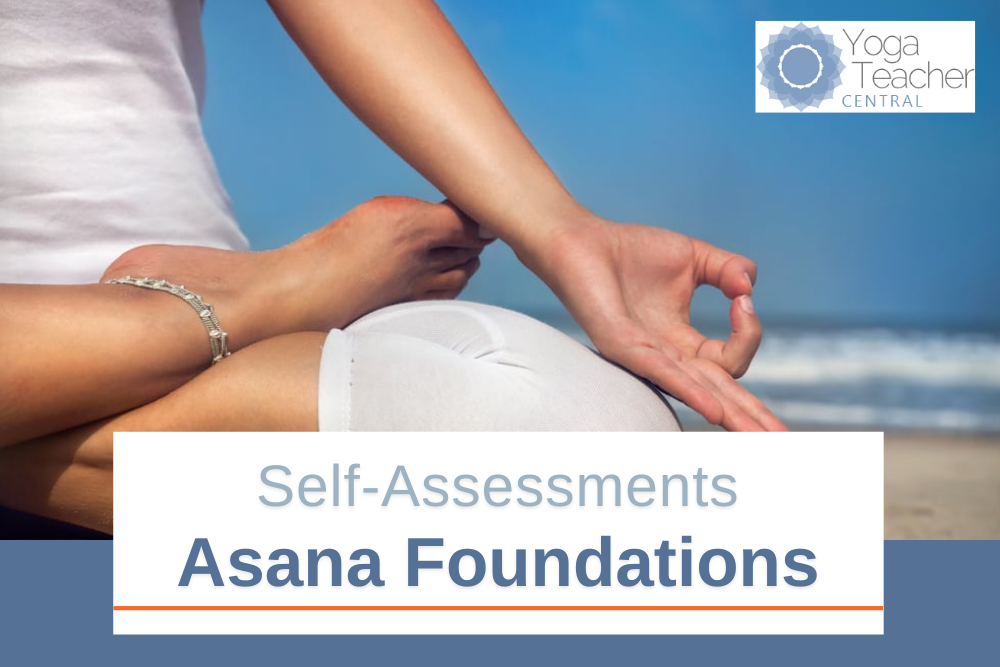
Introduction
Quickly assess your knowledge of Asana Foundations, and identify gaps in your education. See below for assessments on these subjects:
- Mudras Introduction
- Bandhas Introduction
- Asana Philosophy & Theory
- Pose Families Introduction
- Asana Categories Overview
Purpose
Offer a series of free quizzes for yoga teachers to:
- Provide an effective way to assess knowledge of each of the Teaching Knowledge Standards.
- Make it easy to self-assess privately, on your own time.
- Help teachers who identify educational gaps to bolster their knowledge with accessible and practical lessons.
More Self-Assessments
For more self-assessments, see the Standards & Self-Assessment Hub.
Mudras Introduction
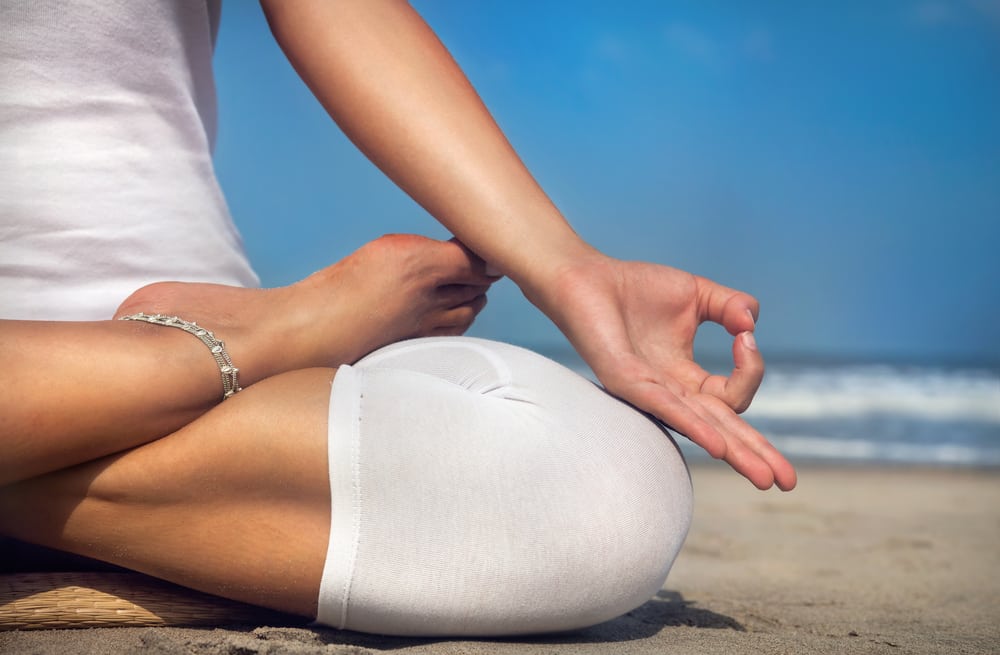
Teaching Standard
Become familiar with the five classes of mudras (hasta, mana, kaya, bandha and adhara), their purpose and the central role they fulfill in Hatha Yoga.
Assessment
- Define “mudra” and explain the types of techniques encompassed within the practice of mudras.
- How are mudras related to Hatha Yoga?
- From which original source texts are mudras introduced?
- In addition to hand mudras, what other classes of mudras are taught within Hatha Yoga?
- What is the purpose / effect of mudras?
- What are some reasons to include mudras in your practice and teaching?
Bandhas Introduction
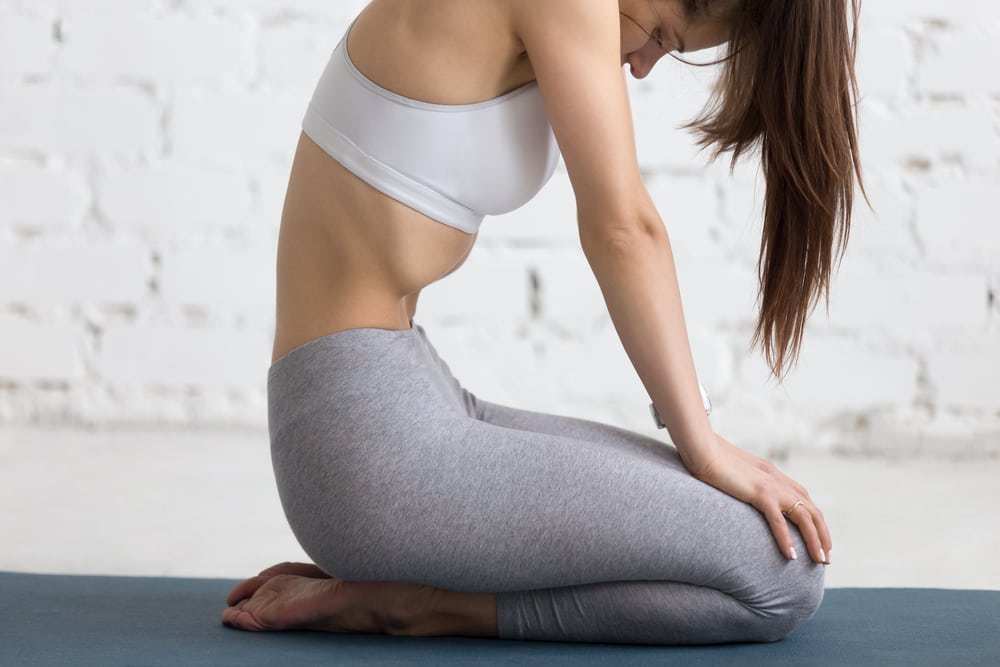
Teaching Standard
Become familiar with the purpose of bandhas and why it’s inadvisable to teach bandhas in most drop-in classes.
Assessment
- What is the meaning of the Sanskrit word, “bandha?”
- To what greater category of yogic tools do bandhas belong?
- What is the purpose of bandhas?
- What is the basic technique of practicing a bandha?
- For what reasons is it inadvisable to teach bandhas in most public classes?
- What are some consequences of incorrect bandha practice?
- Describe expert Maty Ezraty’s description of how knowledge of bandhas should occur.
- Give an example of a teaching that may be similar or related to bandhas but is best taught as distinct from the practice of bandhas.
Asana Philosophy & Purpose
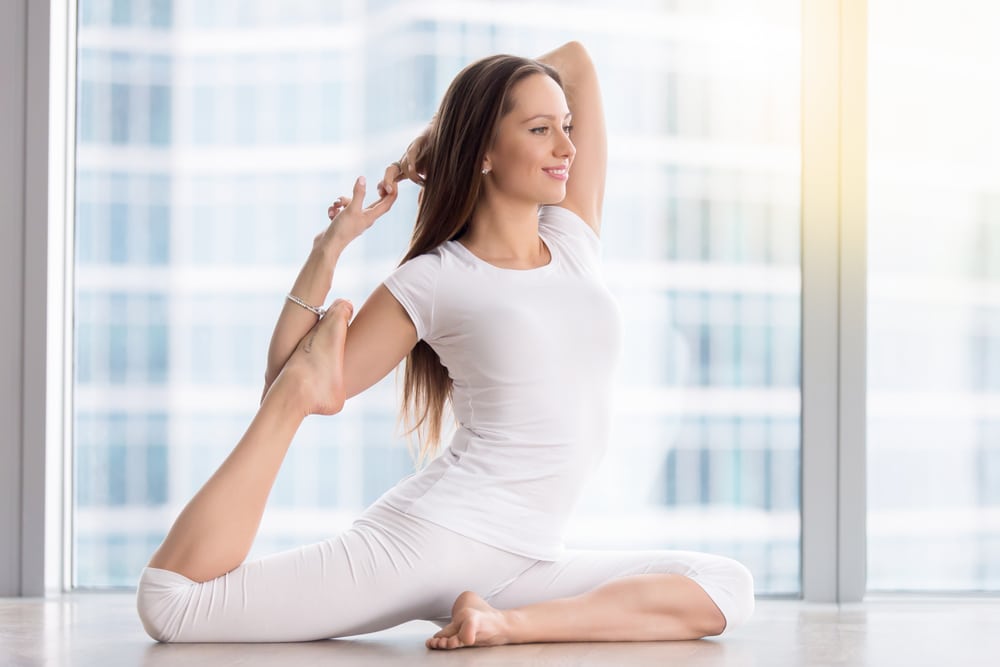
Teaching Standard
Memorize and understand sutras 2.46 to 2.49 and become familiar with philosophical perspectives regarding the purpose and benefits of asana.
Assessment
- What is asana?
- How many sutras discuss asana?
- Define sthira and sukha.
- What does sutra47 discuss?
- According to sutra48, how is asana related to duality?
- Sutras46 to 2.49 provide the definition, practice, and results of asana. Translate these sutras.
- Provide a traditional perspective on what defines health and fitness.
- How did Shankaracharya define yoga asana?
- How has Swami Satyananda Saraswati defined yoga asana?
- What has B.K.S. Iyengar said is the key to mastering yoga?
- Give multiple answers to the question, “What is the purpose (or benefits) of asana?”
Pose Families Introduction
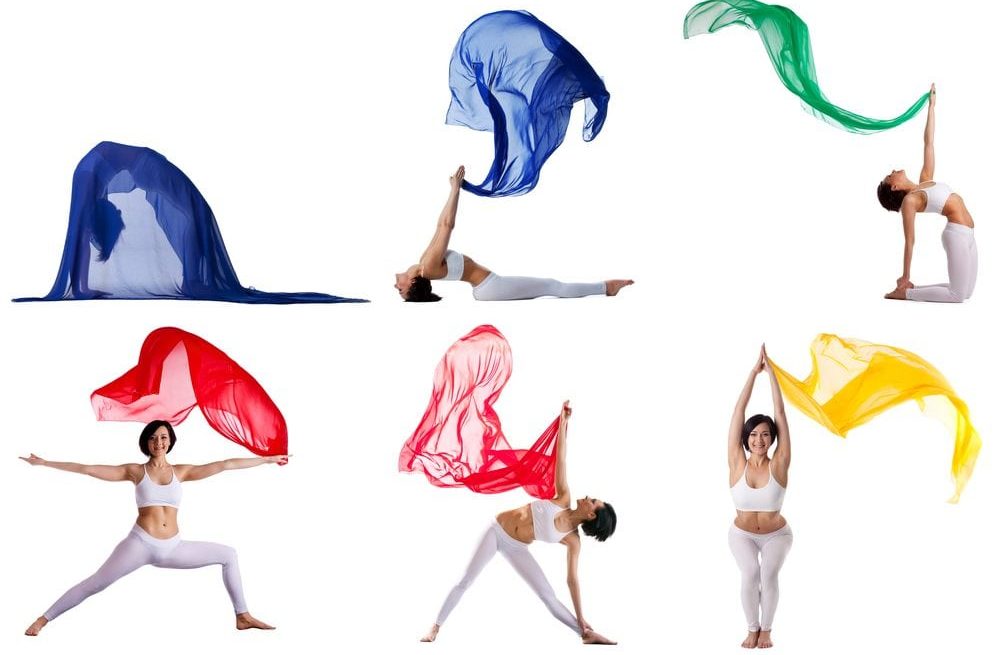
Teaching Standard
Understand the importance of function over form and how knowledge of pose categories and families informs teaching.
Assessment
- How does knowledge of the qualities and characteristics of pose categories and families inform teaching?
- What is of primary concern when choosing or teaching a pose?
- Describe the classification systems offered by the following experts.
- K.V. Desikachar
- Ray Long
- Silva Mehta
- Joseph LePage
- Dharma Mittra
- Mark Stephens
- Name and define common pose categories.
- List poses that belong to these families of common shapes or imprints.
- Tadasana Family
- Uttanasana Family
- Virabhadrasana I Family
- Virabhadrasana II Family
- Expert Mukunda Stiles teaches that we can categorize poses by the features they resemble or evoke. In what other ways has he classified asana?
- Provide examples for the following categories named by Mukunda Styles.
- Animals
- Sages
- Qualities
- Stages of Life
- Body Parts
- Nature
- Geometrical Figures
- Mukunda Stiles classifies asanas according to their primary effects, such as the following. Provide pose examples for each.
- Affects Spinal Column
- Addresses Muscles of Extremities
- Hollow Organs
- Endocrine Glands & Sense Organs
- Induces Relaxation
- Promotes Meditation or Pranayama
Asana Categories Overview
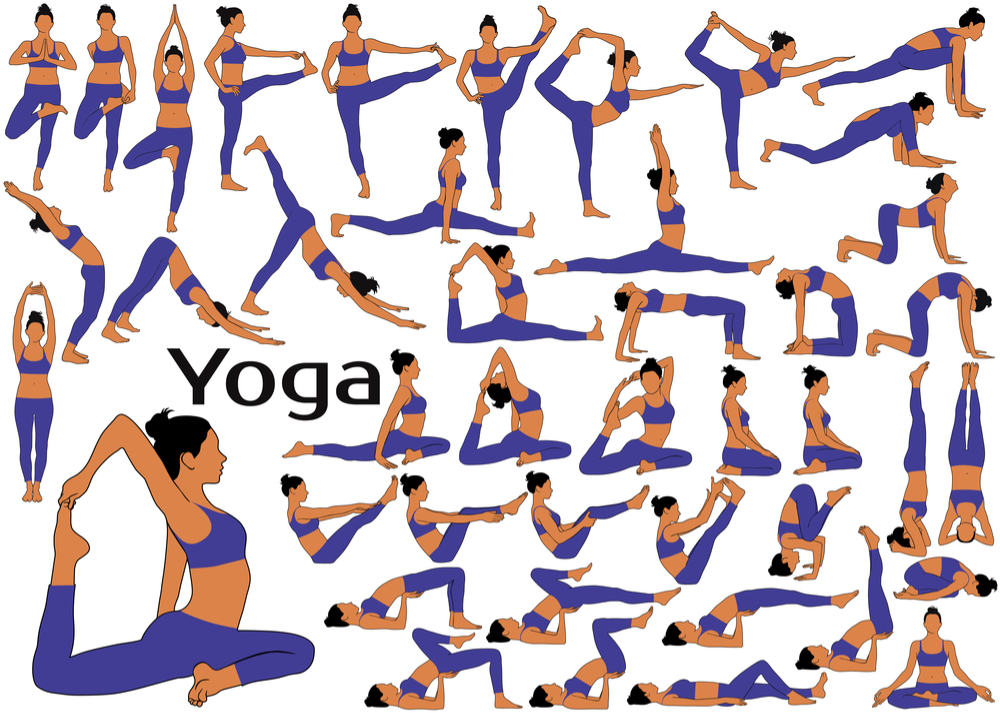
Teaching Standard
Learn the physical and energetic effects of all major pose categories and become proficient in using this knowledge to inform sequencing.
Assessment
- What are the physical and energetic effects of Standing Poses?
- Describe sequencing considerations for Standing Poses.
- What is Forward Bending?
- What is the anatomical term for forward bending?
- What are the physical and energetic effects of Forward Bends?
- Describe sequencing considerations for Forward Bends.
- What is the primary effect of Backbends? What is the secondary effect, present in active backbends?
- Define the term “spinal extension.”
- What are the physical and energetic effects of Backbends?
- Describe sequencing considerations for Backbends.
- What do Twisting Poses do and what is the effect?
- How do Twists affect the shoulder girdle, pelvic girdle and spine?
- What are the physical and energetic effects of Twists?
- Describe sequencing considerations for Twists.
- What functional benefit is gained from Balancing Poses?
- What are the physical and energetic effects of Balancing Poses?
- Describe sequencing considerations for Balancing Poses.
- Name and describe four categories of Inversions.
- What are the physical and energetic effects of Inversions?
- Describe sequencing considerations for Inversions.
- What are the functions and benefits of Core Strengthening Poses?
- Describe cautions for Core Strengthening Poses.
- A balanced approach to core health includes utilizing the abdominals in what way?
- Describe sequencing considerations for Core Strengthening Poses.
- What are the effects of Side Bending Poses?
- What are the effects of Asymmetrical Poses?
Next Steps
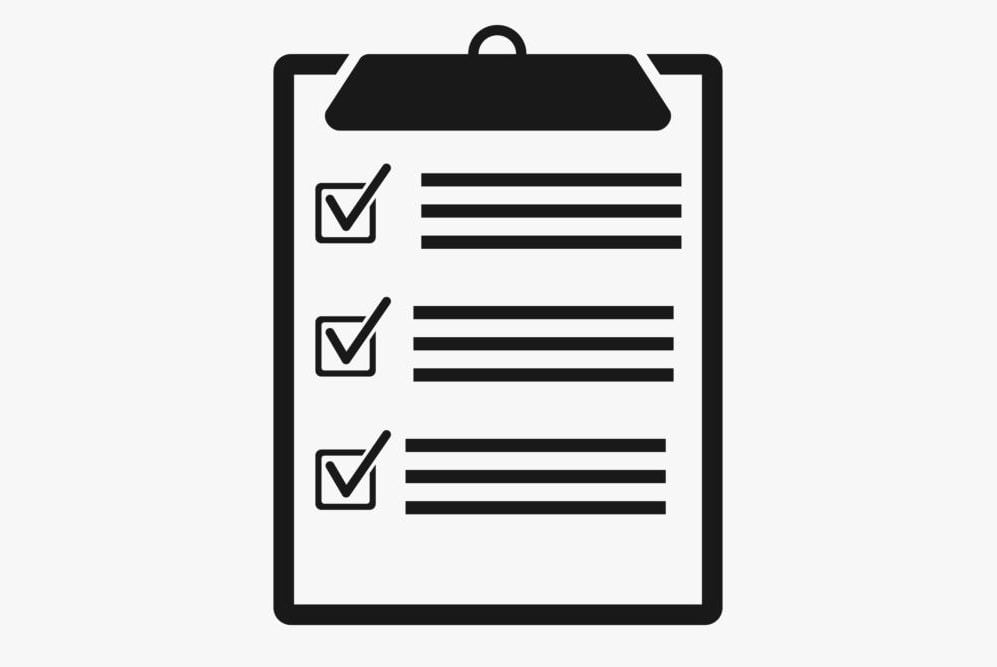
- To view more self-assessments, go to the Standards & Self-Assessment Hub.
- To bolster your knowledge and be recognized as a YTC teacher, enroll in the Yoga Teacher Central Study Program (details below).
- Members, view clear and concise lessons:

In a Nutshell
- The enrollment fee is $25 and is open to Yoga Teacher Central members, past members and non-members.
- Members receive current membership benefits plus additional benefits listed below.
- Enrollment in the Study Program qualifies you for lifetime YTC Teacher status.
Benefits
Enrolling in the Study Program gives you:
- A downloadable Knowledge Standards Lesson Guide to walk you through a structured study path toward certification.
- Selection of 5 downloadable lessons of your choice (from a library of nearly 500).
- Recognition as a YTC Teacher (for life; no expiration).
- Professional marketing kit for highlighting your YTC Teacher status on social media and your website.
- Excellent preparation for taking certification exams.
Members
- Your current membership gives you online access to not only thousands of pages of organized study and teaching knowledge, but also sequence breakdowns and teaching notes, theme plans, injury cheat-sheets, and so on.
- When you enroll in the Study Program, you get these additional benefits: a Knowledge Standards Lesson Guide, selection of 5 downloadable lessons of your choice, and a professional marketing kit for highlighting your YTC Teacher status on social media and your website.

See here for information about exams, badges and certification. Get links for each exam, and for a no-risk trial exam.
We think you’ll enjoy taking the exams. The questions are well-thought-out and the subject matter is quite engaging and significant for teachers. You’ll get an inspiring teaching after answering each question. At the end of the exam, you see a summary of wrong answers and the relevant teachings, giving you a personal study guide targeted to your needs.
This is an hour well-spent!









